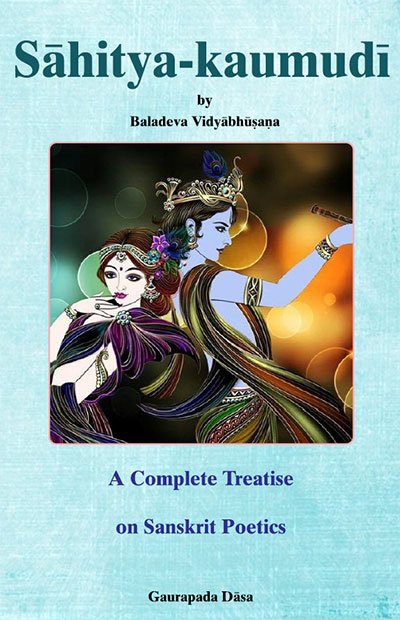Sahitya-kaumudi by Baladeva Vidyabhushana
by Gaurapada Dāsa | 2015 | 234,703 words
Baladeva Vidyabhusana’s Sahitya-kaumudi covers all aspects of poetical theory except the topic of dramaturgy. All the definitions of poetical concepts are taken from Mammata’s Kavya-prakasha, the most authoritative work on Sanskrit poetical rhetoric. Baladeva Vidyabhushana added the eleventh chapter, where he expounds additional ornaments from Visv...
Text 10.23
यथोत्तरम् उपमेयस्योपमानत्वे रसनोपमा. तत्राभिन्ने
yathottaram upameyasyopamānatve rasanopamā. tatrābhinne sādharmye yathā,
If the upameya in one instance is turned into an upamāna in the next and so on in succession, that is a chain of similes (rasanopamā). There are two varieties: The common attribute is always the same or the common attribute is always different. This illustrates the first kind:
yasya buddhir[1] ivādhītir adhītir iva dhīratā |
dhīrateva kriyā gurvī viṣṇu-bhaktiṃ sa vindati ||
A person whose study is deep like an ocean, whose wisdom is deep like his study, and whose deeds are deep like his wisdom obtains devotional service to Viṣṇu.
Commentary:
Mammaṭa calls this ornament raśanopamā (Kāvya-prakāśa, verse 413 vṛtti). Viśvanātha Kavirāja’s changed it to rasanopamā. Kavikarṇapūra uses the term rasanopamā, whereas Jagannātha follows Mammaṭa. The terms raśanā and rasanā are synonymous in the sense of girdle.[2]
Footnotes and references:
[1]:
The verse should read: yasyāmbudhir. This is taken in the translation.
